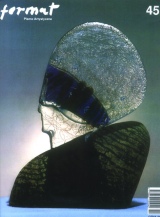Sztuka Litwy: spojrzenie z bliska
Art. In Lithuania: a Close Look
Author(s): Dalia KaratajienėSubject(s): Fine Arts / Performing Arts
Published by: Akademia Sztuk Pięknych im. Eugeniusza Gepperta we Wrocławiu
Summary/Abstract: In 1999, when Lithuania gained independence, the Postmodernist style started influencing art in the country. Artistic groups, which were formed at the beginning of the 1990’s, were not stable. Art historians should rather concentrate on artists and not on artistic groups, when they write about Lithuanian art of that period. Lithuania doesn’t have national gallery. The Art Academy in Wilno isn’t the only artistic school and doesn’t the monopoly on artistic education. There are many short-lived artistic phenomena, which only serve commercial and advertising purposes. Art historians and art critics face problems, when they try to write about contemporary Lithuanian art, because the situation is rather chaotic and there is no broad platform, where artists could meet. Nevertheless, artistic landscape in Lithuania changes and becomes more and more interesting. The Soviet motifs in art disappear from the scene. In 1991, Geographic Institute in Paris decided that the geographic center of Europe is near Wilno. Lithuanian authorities decided to establish a plainair museum in that area. It was the European Park. In that area, there are located many pieces of Avantgarde sculpture by Lithuanian artists. Also, the Park initiates and manages international cultural and artistic exchange projects. Park directors and curators cooperate with cultural institutions in such countries as, for example, Armenia, Bielorus, the Czech Republic, Egypt, Finland, France, Germany, the Great Britain, India, Ireland, Japan, Mexico, Peru, Poland, Russia, the U.S.A., Ukraine and Venezuela. Gintaras Kuros ‘planted’ a commemorative tree in the Park. It is entitled ‘The Tree of Information, LNK Intomedis’. It is made of 3,135 used television sets and it is growing. In Wilno, there are 115 pieces of sculpture located in different areas of the city. Many painters show contemporary scenes in Lithuania. Algirdas Groszkiwiczius and Jurate Mykolaityte show Wilno in their cityscapes. Rajmundas Slizius mostly shows self-satisfied, happy people. Vygautas Paukszta refers to existential themes. Algis Skaczkauskas likes color contrasts. Ruta Katiliute, Klaudiusz Petreiko, Dalia Kascziunaite, Arunas Tornau continue the abstract tradition of painting. Lithuanian photography was discussed by Eugeniusz Karpowiczius in his book entitled ‘Photography in Wilno from 1858 to 1915’.
Journal: Format - Pismo artystyczne
- Issue Year: 45/2004
- Issue No: 03+04
- Page Range: 74-77
- Page Count: 4
- Language: Polish

